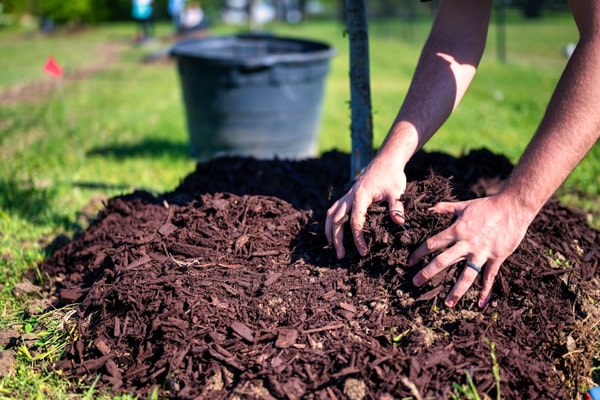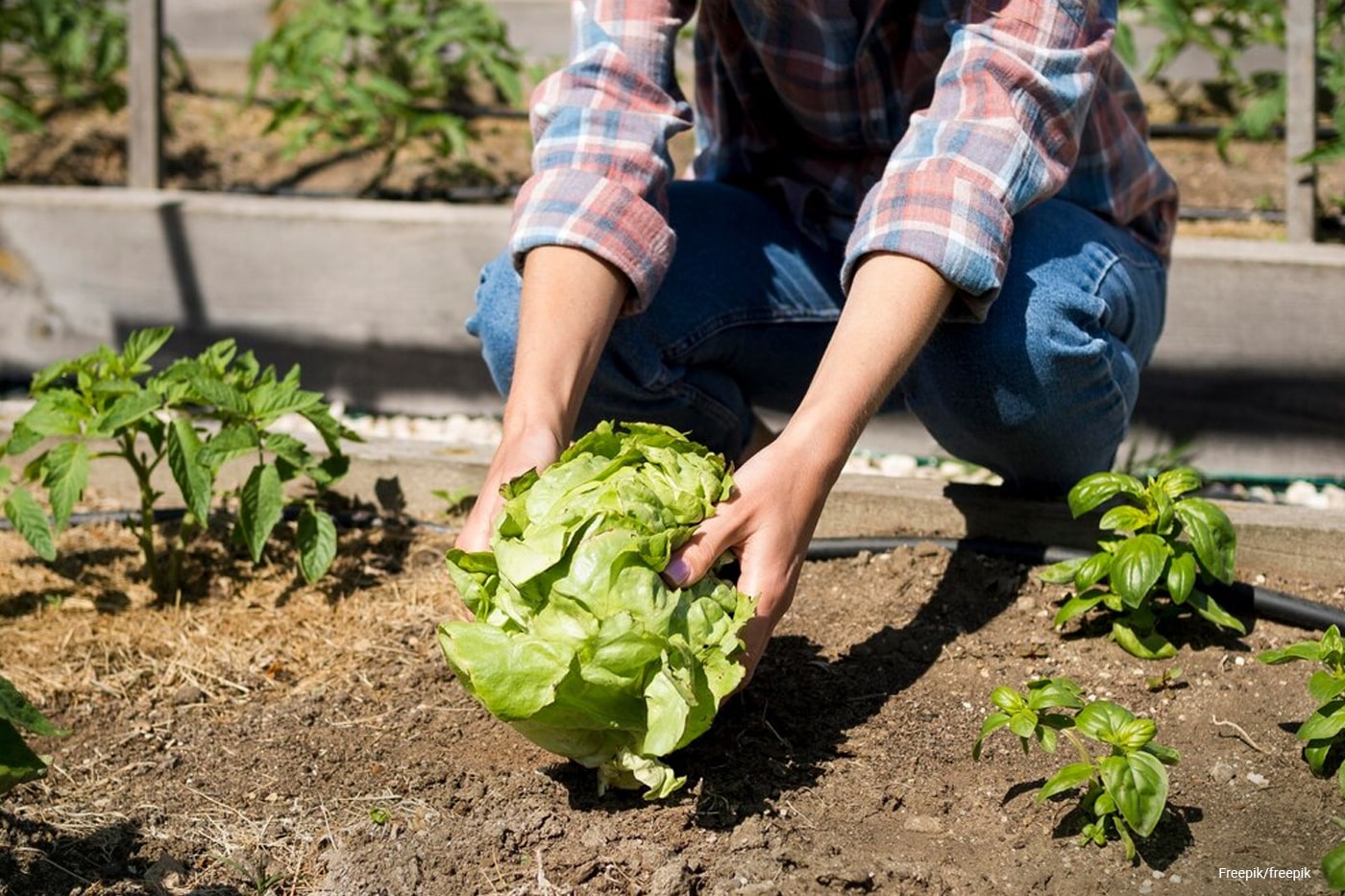Choosing the right mulch for your flower beds is essential for maintaining soil health, conserving moisture, and promoting vigorous plant growth. Consider factors such as your soil type, climate, the types of plants you want to grow, and aesthetic preferences when selecting mulch for your garden.
Some popular options for mulch include organic materials like wood chips, straw, and shredded leaves, as well as inorganic options like rubber mulch or landscape fabric.
Contents []
Best Mulch for Flowerbeds

Compost: Compost is a nutrient-rich mulch that enhances soil fertility and promotes healthy plant growth. It’s easy to make at home by recycling kitchen scraps and yard waste, making it an eco-friendly option for flower beds.
Organic mulch: Made from natural materials like bark, leaves, or compost, organic mulch enriches the soil as it breaks down, providing essential nutrients to your flowers. It also helps retain moisture, suppress weeds, and regulate soil temperature, creating optimal growing conditions for your plants.
Shredded bark: Shredded bark mulch is a popular choice for flowerbeds because it’s aesthetically pleasing and provides excellent moisture retention and weed suppression. It decomposes slowly, adding organic matter to the soil and improving its structure over time.
Aged grass clippings: Aged grass clippings can be a beneficial mulch for flowerbeds as they break down quickly, adding nutrients to the soil. Make sure the grass clippings have dried out before using them to avoid matting and potential issues with odor.
Leaves: Fallen leaves make an excellent mulch for flowerbeds as they decompose, enriching the soil with organic matter and nutrients. Shred the leaves before applying them to ensure they break down more quickly and create a uniform layer over your flowerbeds.
Aged wood chips: Aged wood chips are a durable and long-lasting mulch option for flowerbeds. They provide excellent weed suppression, moisture retention, and insulation for flower roots while adding organic matter to the soil as they decompose.
Mushroom compost: Mushroom compost is a nutrient-rich mulch made from the byproducts of mushroom cultivation. It improves soil structure, enhances fertility, and promotes healthy plant growth in flowerbeds.
How Much Mulch Do I Need?
To get an estimate of the amount of mulch you’ll need for the garden, you have to crunch the numbers.
Start by measuring the flower beds using a tape measure. Measure the length and width of each flower bed in feet for accuracy.
After measuring the flower beds, use this simple formula: multiply the length of each flowerbed by its width to calculate the square footage. For example, if a flowerbed is 10 feet long and 5 feet wide, the square footage would be 10 x 5 = 50 square feet.
Decide how deep you want the mulch layer to be. A depth of 2 to 4 inches is generally recommended for flowerbeds.
Since most mulch is sold by the cubic yard, you’ll need to convert your desired depth into feet. Divide the depth in inches by 12 to get the depth in feet. For example, if you want a mulch layer that is 3 inches deep, divide 3 by 12 to get 0.25 feet.
Multiply the square footage of each flowerbed by the depth in feet to calculate the cubic footage of mulch needed. For example, if your flowerbed is 50 square feet and you want a mulch layer that is 0.25 feet deep, the calculation would be 50 x 0.25 = 12.5 cubic feet.
After calculating the cubic feet, you need to convert in a cubic yard because mulch is sold by cubic yards. Divide the total cubic footage by 27 (since there are 27 cubic feet in a cubic yard). For example, if you need 12.5 cubic feet of mulch, divide 12.5 by 27 to get approximately 0.46 cubic yards.
Additional Tips and Tricks For Mulching

- Mulch will settle over time, so it’s better to err on the side of having slightly more mulch than you think you’ll need rather than not having enough.
- It’s a good idea to round up to the nearest whole number when purchasing mulch to ensure you have enough to cover your flower beds adequately.
- If you’re purchasing a large quantity of mulch, consider having it delivered rather than trying to transport it yourself. Many garden centers and landscaping companies offer delivery services for an additional fee.
- Mulch breaks down over time and will need to be replenished annually to maintain its effectiveness. Keep track of how much mulch you use each year so you can adjust your calculations accordingly for future purchases.
Types of Mulch to Avoid in Flower Beds
Rubber mulch: While it might seem like a good idea because it’s made from recycled tires, rubber mulch can leach harmful chemicals into the soil and plants. It doesn’t break down or provide any nutrients to the soil, making it unsuitable for flowerbeds.
Similar to rubber mulch, shredded rubber mulch can contain harmful chemicals and toxins that leach into the soil. It doesn’t break down or provide any nutrients, making it detrimental to the health of flowerbeds.
Dyed mulch: Mulch that has been dyed with artificial colors may contain chemicals and toxins that can harm plants and soil. These dyes can also leach into the soil, affecting the pH balance and overall health of your flowerbeds.
Fresh wood chips: Fresh wood chips can rob the soil of nitrogen as they decompose, which can be detrimental to the growth of flowers. They also tend to compact, preventing water and air from reaching the roots of plants.
Fresh grass clippings: While grass clippings can be a free and readily available mulch, they can compact easily and create a dense mat that prevents water and air from reaching the soil. They also tend to heat up as they decompose, which can damage delicate flower roots.
Pine needles (in alkaline soil): Pine needles are acidic and can lower the pH of the soil, which is beneficial for acid-loving plants. However, if your soil is already alkaline, using pine needles as mulch can further decrease the pH, making it unsuitable for most flowers.
Sawdust: Sawdust can compact tightly, preventing water and air from reaching plant roots. It also decomposes slowly, robbing the soil of nitrogen in the process. Additionally, sawdust can harbor fungi that may harm your flowering plants.
Walnut shells: Walnut shells contain juglone, a chemical that inhibits the growth of many plants, including flowers. Using walnut shells as mulch can stunt the growth of your flowers and negatively impact the overall health of your flowerbeds.
Straw (in wet climates): While straw can be an effective mulch for retaining moisture and suppressing weeds, it can harbor mold and fungus in wet climates. This can lead to diseases that can harm your flowers.
Cocoa mulch: Cocoa mulch is made from cocoa bean shells and has a pleasant chocolate scent. However, it can be toxic to pets if ingested and may contain caffeine and theobromine, which can harm pets, plants and soil if used excessively.
Mulching is an effective way of suppressing weeds, improving soil quality, and keeping the garden looking neat and organized. But some materials will work for many plants, while others won’t. That’s why it’s essential to be mindful of the kind of mulch you use for your garden’s specific needs.



